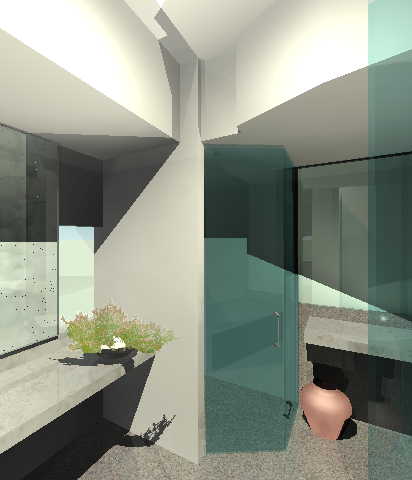Which render application is fastest to setup?
-
As mentioned, I've also been playing with Artlantis.
I know that the quality can't beat Vray, Maxwell and other big renderapplications, but the setup was fast and I realy like the real-time window where the light and materials can be adjusted until the result is good enough to render.
Artlantis has announced a new version in january where quality is improved and faster rendering.
The attached image is rendered in Artlantis as a test!

-
I have been using Bur's Su2Pov3 plugin with success as to quick predictable renders of my Su models. I organize my model and use layers and components to paint similar materials. Su2Pov3 works with Su textures and allows global setup of finishes for colors, textures and glass. In addition you can bump, reflect, etc. Su's materials for rendering. The plugin provides spot, and point lights in addition to Su's sun. On my system use of the plugin is not perfect, and I have been unable to come close to Solo's simple renderings on this site (that may be because of the level of my ability not the renderer), but it is quick, predictable, simple to use, works in Su, and has WOWed my clients. Some models must be exploded prior to rendering, and occasionally the Su2Pov output must be edited to be processed properly in PovRay. The state of Su's ground (per style) is ignored. Perhaps a bit buggy for a neophyte user.
I have tired podium and kerky (didn't like it), and for now am sticking with Su2Pov3. With what I have learned about it since, perhaps the current version of podium is better then the one I evaluated. Maybe I'll try it again some time later.
This is a straight render without any "setup" executed to meet a deadline.
-
Ark, Your render is a good working interior presentation for minimum setup. I have problems with interiors. The attached render was my second attempt. It is a detail of a master bathroom. I spent a ton of time with little to show. The render (this actually was the best of several) has the wrong mood, too much noise, and bad accessories. I had to deal with back faces, interior lighting, reflections, and transparency. Didn't use this in the Client presentation. Hope to get better, perhaps the next one. PovRay is a render engine without real time control, but the plugin is setup to produce fast, test renders.

-
artlantis is a very good app, very easy to learn and use. its problem is, like others, its price tag.
Advertisement







